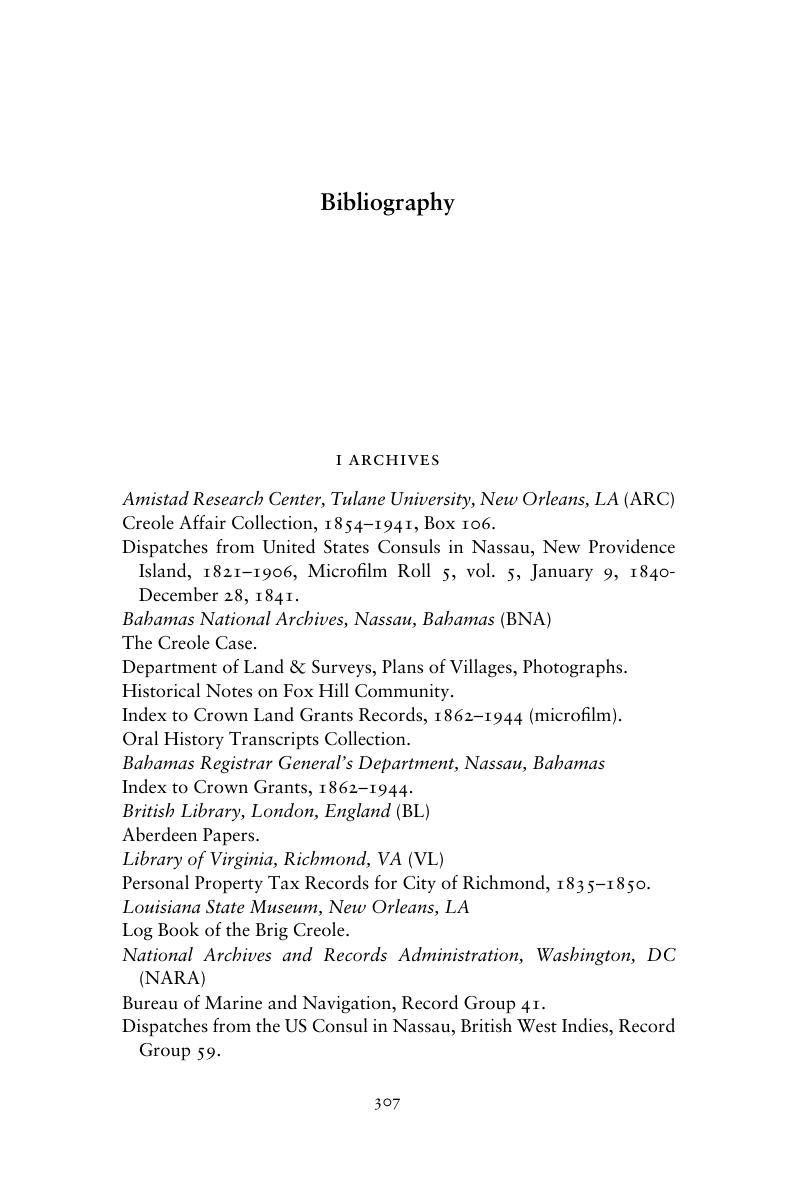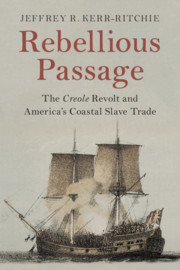Book contents
- Rebellious Passage
- Rebellious Passage
- Copyright page
- Dedication
- Contents
- Figures
- Preface
- Acknowledgments
- Abbreviations
- 1 Eagle versus Lion
- 2 The Coastal Passage
- 3 “Several Cases”
- 4 “Engaged in the Business Ever Since She Was Constructed”
- 5 “The Negroes Have Risen”
- 6 “Their Determination to Quit the Vessel”
- 7 “Old Neighbors”
- 8 “A New State of Things”
- 9 “Property Rights” versus “Rights of Man”
- 10 Causa Proxima, Non Remota, Spectatur
- 11 “Full and Final Settlement”
- Epilogue
- Book part
- Bibliography
- Index
- References
Bibliography
Published online by Cambridge University Press: 07 February 2019
- Rebellious Passage
- Rebellious Passage
- Copyright page
- Dedication
- Contents
- Figures
- Preface
- Acknowledgments
- Abbreviations
- 1 Eagle versus Lion
- 2 The Coastal Passage
- 3 “Several Cases”
- 4 “Engaged in the Business Ever Since She Was Constructed”
- 5 “The Negroes Have Risen”
- 6 “Their Determination to Quit the Vessel”
- 7 “Old Neighbors”
- 8 “A New State of Things”
- 9 “Property Rights” versus “Rights of Man”
- 10 Causa Proxima, Non Remota, Spectatur
- 11 “Full and Final Settlement”
- Epilogue
- Book part
- Bibliography
- Index
- References
Summary

- Type
- Chapter
- Information
- Rebellious PassageThe <I>Creole</I> Revolt and America's Coastal Slave Trade, pp. 307 - 331Publisher: Cambridge University PressPrint publication year: 2019



